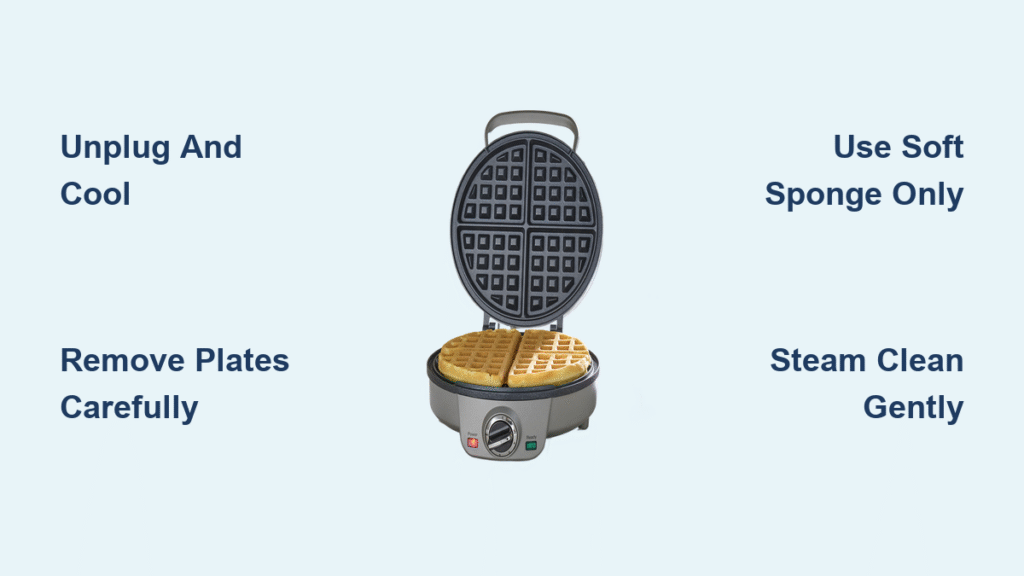Your Cuisinart food processor sits on the counter gathering dust because you only ever use the standard blade. You’re missing out—those extra attachments transform it from a basic chopper into a kitchen powerhouse capable of restaurant-quality results. Most owners never discover how to properly use their shredding disc, slicing disk, or dough blade, settling for mediocre outcomes when professional techniques could save you 20 minutes per meal prep. Learn exactly how to leverage every blade included with your Cuisinart to achieve consistent, impressive results that elevate everyday cooking. You’ll unlock faster prep times, perfect textures, and new culinary possibilities within your first use.
Stop wasting money on pre-shredded cheese or bagged coleslaw when your Cuisinart can create fresher, cheaper alternatives in seconds. Understanding how to use Cuisinart food processor blades correctly means never wrestling with uneven hummus, torn pizza dough, or mushy vegetable slices again. This guide cuts through the confusion with precise, model-tested techniques for every attachment—no more guessing whether to pulse or run continuously, which blade handles warm dough, or why your cheese turns to paste. You’ll gain the confidence to tackle any recipe knowing exactly which blade delivers perfect results every time.
S-Blade Mastery for Precise Chopping and Blending
The metal S-blade (often called the Sabatier blade) handles 70% of food processor tasks through its curved design that creates powerful vortex action. This workhorse blade transforms from rough chop to silky purée based solely on your technique—master these methods to avoid over-processed disasters.
Pulse Control for Perfect Texture Results
Pulse technique gives you surgical control over ingredient texture:
– Press pulse 3-5 times for chunky salsa with distinct tomato pieces
– Use 8-10 pulses for pesto that retains visible basil flecks
– Pulse nuts just 4-6 times before they turn to butter
– Critical mistake: Holding pulse too long creates uneven results—release completely between pulses
Continuous operation creates smooth emulsions:
– Run 30-60 seconds for restaurant-style hummus
– Process 2-3 minutes for creamy almond or peanut butter
– Blend soups 90 seconds after cooking for velvety texture
– Pro tip: For mayonnaise, stream oil slowly while processor runs continuously—never pulse
S-Blade Applications You’re Missing
- Onion dicing: Cut peeled onions into quarters, pulse 5-6 times for uniform pieces without tears
- Pesto perfection: Pulse garlic and nuts first, add basil with 3 pulses, then stream oil while running
- Nut butter shortcut: Process roasted nuts 2 minutes, scrape sides, then run 60 seconds more—no added oil needed
- Dough starter: Mix bread ingredients 10 seconds before switching to dough blade
Shredding Disc Setup for Restaurant-Quality Results

Unlike the S-blade that goes inside the bowl, the shredding disc mounts on top of the bowl assembly. This positioning creates consistent shreds impossible to achieve by hand—when installed correctly.
Correct Installation Sequence
- Unplug processor and remove S-blade (never skip this safety step)
- Place disc on center post with sharp teeth facing upward
- Align lid so feed tube sits directly over disc
- Test rotation by hand—disc should spin freely without wobble
Warning: Installing upside down creates shredded pulp instead of clean shreds. The textured side always faces up toward the feed tube.
Pro Shredding Techniques for Different Foods
Feed produce through the pusher with firm, steady pressure:
– Hard vegetables: Cut carrots into 3-inch sticks for even shredding—no pre-chopping needed
– Cabbage: Quarter and remove core, then push wedges through for perfect coleslaw shreds
– Cheese: Chill blocks 15 minutes before grating—cold cheese shreds cleanly without clumping
– Pro move: Angle carrots slightly while pushing for delicate ribbons instead of shreds
Plastic Dough Blade for Perfect Bread and Pastry
The plastic dough blade’s flat paddles work fundamentally different than metal blades—its design folds rather than cuts dough, preventing gluten damage that ruins texture.
When to Switch From S-Blade to Dough Blade
- Yeast doughs: After initial 10-second mix with S-blade, switch for kneading
- Pasta dough: Use immediately after combining flour and eggs
- Pie crusts: Switch after cutting butter into flour for final water incorporation
- High-hydration doughs: Essential for focaccia and ciabatta to prevent tearing
Foolproof Kneading Process
- Mix ingredients with S-blade for 10 seconds only
- Switch to plastic dough blade
- Process 45-60 seconds until dough forms smooth ball
- Check texture: Properly kneaded dough springs back when poked
- Critical tip: Never exceed 60 seconds—over-kneading creates tough bread
Slicing Disk Techniques for Uniform Cuts

The slicing disk creates precise cuts through its flat blade surface—position it identically to the shredding disc but note the smooth cutting edge versus raised shredding teeth.
Thickness Control for Different Applications
Adjust your slicing disk based on recipe needs:
– Paper-thin: Brussels sprouts for raw salads (1-2mm setting)
– Medium: Potatoes for gratins (3-4mm setting)
– Thick: Zucchini rounds for lasagna (5-6mm setting)
Slicing Success Checklist
- Prep produce: Trim items to fit feed tube diameter
- Firmness matters: Chill tomatoes 20 minutes before slicing
- Pressure control: Push steadily—varying pressure creates uneven thickness
- Batch size: Process no more than 2 cups at a time for consistent results
- Pro warning: Never force soft produce like ripe peaches—they’ll turn to mush
Blade Selection Strategy for Flawless Results

Choosing the wrong blade ruins hours of cooking—use this decision framework before touching any attachment.
Texture-Based Blade Selection
Need coarse chop? → S-blade with 4-6 pulses
Want fine shreds? → Shredding disc with firm pressure
Require uniform slices? → Slicing disk with steady feed
Making elastic dough? → Plastic dough blade after initial mix
Food Property Guidelines
- Moisture alert: Wet ingredients (cucumbers) slice best when chilled
- Hardness rule: Carrots shred well at room temperature; soft cheese requires chilling
- Volume tip: Process >3 cups of vegetables with discs instead of S-blade
Safety and Maintenance Non-Negotiables
Sharp blades create serious injury risks if mishandled—these protocols prevent accidents and extend blade life.
Critical Safety Steps
- ALWAYS unplug before changing blades—no exceptions
- Grip discs by edges only—never touch sharp surfaces
- Verify secure lid lock before starting—wobbling causes blade ejection
- Pusher required—fingers never enter feed tube
Cleaning Protocol That Preserves Sharpness
- Rinse blades immediately after use (dried food dulls edges)
- Wash shredding/slicing discs by hand—dishwasher heat warps precision edges
- Air-dry completely before storage (trapped moisture causes corrosion)
- Store discs in protective sleeves—tossing loose in drawer creates hazards
- Pro maintenance: Use soft brush on S-blade crevices to remove trapped starch
Common Blade Mistakes That Ruin Results
Even experienced cooks sabotage their results with these preventable errors.
Selection Errors
- S-blade for cheese: Creates paste instead of shreds—always use shredding disc
- Slicing soft tomatoes: Results in mush—chill first or use S-blade with pulse
- Metal blade for dough: Cuts gluten strands—switch to plastic dough blade
- Overfilling bowl: Causes uneven processing—never exceed ⅔ capacity
Operational Disasters
- Forcing large items: Pushing uncut potatoes jams motor—pre-cut to fit feed tube
- Skipping pulse technique: Continuous run turns nuts to butter—pulse in 3-second bursts
- Wet disc storage: Leads to rust on metal components—dry thoroughly before putting away
Troubleshooting Immediate Fixes
S-Blade Issues
Stops mid-processing: Unplug immediately, check for food jam under blade base
Uneven chopping: Bowl overfilled—process in smaller batches
Motor straining: Food too large—pre-cut ingredients to 1-inch pieces
Disc Problems
Shreds unevenly: Disc installed upside down—reposition with teeth facing up
Wobbly disc: Not seated on center post—realign before locking lid
Poor slicing: Blade dull from dishwasher use—hand wash only going forward
Mastering how to use Cuisinart food processor blades transforms tedious prep into effortless precision. Start with the S-blade for reliable chopping, then expand to shredding discs for fresh coleslaw in 30 seconds, slicing disks for perfect gratin layers, and dough blades for bakery-quality bread. Remember the golden rule: pulse for texture control, continuous for smoothness, and always match the blade to your food’s properties. Clean discs by hand immediately after use to maintain their factory edge, and never force oversized items through the feed tube. Within one week of applying these techniques, you’ll process ingredients 70% faster while achieving results that surprise even experienced cooks. Your Cuisinart isn’t just another appliance—it’s your secret weapon for restaurant-quality meals at home when you know exactly which blade to use and how.





